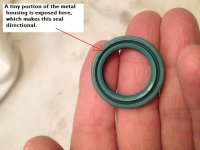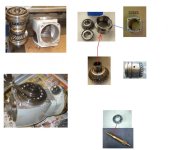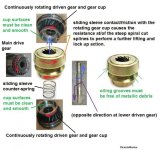mitsu_matt
New member
I have developed a shifting problem with my VP 250 drive. When shifting into forward I don't get engagement until I bring the RPM up to about 1200. Once engaged the drive operates fine until RPM drops under 900 or so. Reverse engages normal at any RPM. It has a brand new shift cable, I have tried maxing adjustment with no improvement. The retaining plate for the cable is there and tight. The problem is becoming progressively worse. I am thinking I have a worn cone clutch issue.
I have a spare drive and would like to just swap the transmission portion out. What do I need to look out for as far as shimming is concerned? If it is too much of a pain I can just swap the entire drive but I would rather just use the transmission.
Thanks in advance for any help.
I have a spare drive and would like to just swap the transmission portion out. What do I need to look out for as far as shimming is concerned? If it is too much of a pain I can just swap the entire drive but I would rather just use the transmission.
Thanks in advance for any help.




